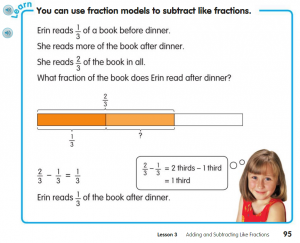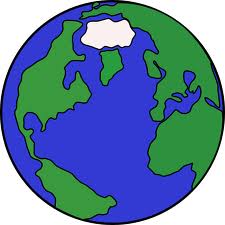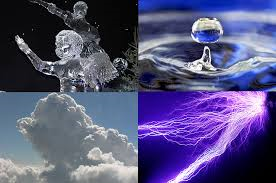Posted by kavery508 | Posted in Uncategorized | Posted on March 20, 2017
 Literacy Night is coming on Friday, April 7th! This annual school event features games, books, local authors, food, and more. A favorite feature of this event is the reading of original pieces by student authors. I encourage any student from our class to participate.
Literacy Night is coming on Friday, April 7th! This annual school event features games, books, local authors, food, and more. A favorite feature of this event is the reading of original pieces by student authors. I encourage any student from our class to participate.
If your child wishes to read his/her writing (in classrooms with a group of about 9 other students), here’s what to do: 1. Select a piece of writing from home or school this year (think of the great work they’ve done with Opinion, Informative, and Narrative writing, or something they’ve worked on at home). 2. Let me know this week that you will be participating. You’ll be sent a permission form to be returned no later than March 30. This will be followed by a confirmation letter with room assignment and time. 3. Come and celebrate! Students begin presenting at 6:00 PM.
 Our reading focus this week is on using the comprehension strategy Determining Importance. In nonfiction texts, authors use titles, subtitles, and headings as clues to their main ideas. Using a variety of texts, students will read the supporting details of an author’s argument. Then, they will sort out interesting vs. important information using the headings and title to guide their thinking. You can try it out at home, too! Visit a kid-friendly site like Time For Kids or National Geographic Kids; choose an article with headings; read the sections; and look for the main idea of each with the heading and title in mind. Here’s one example, about a new species of tree frog that looks just like Kermit: http://kids.nationalgeographic.com/explore/nature/new-real-life-frog-looks-like-kermit/
Our reading focus this week is on using the comprehension strategy Determining Importance. In nonfiction texts, authors use titles, subtitles, and headings as clues to their main ideas. Using a variety of texts, students will read the supporting details of an author’s argument. Then, they will sort out interesting vs. important information using the headings and title to guide their thinking. You can try it out at home, too! Visit a kid-friendly site like Time For Kids or National Geographic Kids; choose an article with headings; read the sections; and look for the main idea of each with the heading and title in mind. Here’s one example, about a new species of tree frog that looks just like Kermit: http://kids.nationalgeographic.com/explore/nature/new-real-life-frog-looks-like-kermit/
 This week students will learn the ins-and-outs of writing poetry, having studied poetic elements all year. What’s important is that they identify meaningful moments, memories, people, or objects from their lives and tell about them in verse (short descriptive phrases vs. sentences) with attention to imagery and word choice. Here are some great last snippets from our recent work with character traits (opinion) and informative writing from 1) Aubrey and 2) Vennela, on Helen Keller and 3) Oliver on Thomas Jefferson: 1) Helen Keller was brave. When she was fourteen she attended the Wright Humason School for the deaf. She went all by herself. 2) For another thing, she was intelligent. Anne taught Helen how to spell words by spelling letters into her hand. Helen learned spelling words quickly. 3) Many people in America wanted the king to lower the cost of paper, tea, and glass which came from England. They sent Ben to speak to the king about unfair charges. Awesome!
This week students will learn the ins-and-outs of writing poetry, having studied poetic elements all year. What’s important is that they identify meaningful moments, memories, people, or objects from their lives and tell about them in verse (short descriptive phrases vs. sentences) with attention to imagery and word choice. Here are some great last snippets from our recent work with character traits (opinion) and informative writing from 1) Aubrey and 2) Vennela, on Helen Keller and 3) Oliver on Thomas Jefferson: 1) Helen Keller was brave. When she was fourteen she attended the Wright Humason School for the deaf. She went all by herself. 2) For another thing, she was intelligent. Anne taught Helen how to spell words by spelling letters into her hand. Helen learned spelling words quickly. 3) Many people in America wanted the king to lower the cost of paper, tea, and glass which came from England. They sent Ben to speak to the king about unfair charges. Awesome!
 We will wrap up our study of fractions by learning to add and subtract “like” fractions. We’ll then connect this concept to bar models we’ve previously used to represent problems. Check out the picture above: notice how bar models can be used to think concretely about the relative space and size involved in fractions–smart!
We will wrap up our study of fractions by learning to add and subtract “like” fractions. We’ll then connect this concept to bar models we’ve previously used to represent problems. Check out the picture above: notice how bar models can be used to think concretely about the relative space and size involved in fractions–smart!
 Our Trimester 3 mapping goals include locating and identifying the ‘big three’ countries in North America, distinguishing between countries and continents, and identifying major physical features of the U.S. such as the Mississippi, Rocky Mountains, Appalachians, Great Lakes, etc.
Our Trimester 3 mapping goals include locating and identifying the ‘big three’ countries in North America, distinguishing between countries and continents, and identifying major physical features of the U.S. such as the Mississippi, Rocky Mountains, Appalachians, Great Lakes, etc.
 The final science topic of the year that we will explore is States of Matter. Through a combination of hands-on activities, investigations meant to teach the scientific process of inquiry, and multimedia approaches, students should develop an understanding of matter and be able to identify solids, liquids, and gases by their observable properties. This week they will investigate solids, liquids, and gels by manipulating examples of each in order to learn about their properties. Here’s a link to our district’s science program for this topic, with objectives and content defined:https://www.fossweb.com/delegate/ssi-wdf-ucm-webContent?dDocName=D568667
The final science topic of the year that we will explore is States of Matter. Through a combination of hands-on activities, investigations meant to teach the scientific process of inquiry, and multimedia approaches, students should develop an understanding of matter and be able to identify solids, liquids, and gases by their observable properties. This week they will investigate solids, liquids, and gels by manipulating examples of each in order to learn about their properties. Here’s a link to our district’s science program for this topic, with objectives and content defined:https://www.fossweb.com/delegate/ssi-wdf-ucm-webContent?dDocName=D568667

